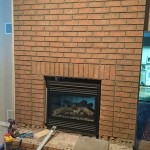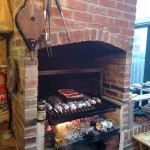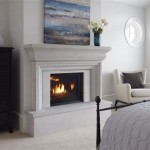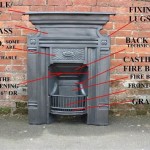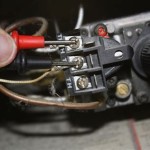Freestanding Outdoor Fireplaces: A Comprehensive Guide
A freestanding outdoor fireplace offers a focal point and gathering place for outdoor spaces. Unlike built-in structures, these fireplaces are self-contained units that can be placed and moved relatively easily, providing flexibility in landscape design and usage. They come in a wide variety of styles, materials, and fuel types, catering to diverse aesthetic preferences and functional needs. This article will explore key aspects of freestanding outdoor fireplaces, including design considerations, material options, fuel choices, safety precautions, and maintenance practices.
Design and Placement Considerations
The design and placement of a freestanding outdoor fireplace are critical for both aesthetic appeal and practical functionality. The size and style of the fireplace should complement the overall landscape design, creating a harmonious visual flow. Considerations should include the architectural style of the house, the existing hardscaping, and the surrounding vegetation.
Size is a crucial factor. A fireplace that is too large can overwhelm a small patio, while one that is too small can be lost in a large backyard. Measure the available space and consider the scale of surrounding features before making a selection. The seating area around the fireplace should also be considered, ensuring adequate space for comfortable movement and interaction.
Placement is equally important. Local building codes and regulations often dictate minimum distances from structures, property lines, and flammable materials. These regulations are in place to prevent fire hazards and ensure safety. Furthermore, prevailing wind directions should be taken into account to minimize smoke exposure to occupants. Placement near seating areas should be planned to maximize the warmth and ambiance provided by the fireplace, while avoiding potential obstructions to pathways and views.
Consider the visual impact from both inside and outside the house. The fireplace should be an attractive feature from all angles, enhancing the overall aesthetic of the property. Strategic placement can also provide privacy or screen unsightly views.
Finally, assess the ground surface where the fireplace will be placed. A level, stable surface is essential for safe operation. If the ground is uneven or unstable, consider creating a concrete pad or using pavers to provide a solid foundation. This will prevent the fireplace from tipping or shifting, reducing the risk of accidents.
Material Options and Durability
Freestanding outdoor fireplaces are constructed from a variety of materials, each offering distinct advantages in terms of aesthetics, durability, and cost. Common materials include metal (steel, stainless steel, cast iron), stone (natural or manufactured), brick, and concrete.
Metal fireplaces are often more affordable and lighter than stone or brick options, making them easier to move. Steel fireplaces are typically treated with a heat-resistant coating to prevent rusting, but require periodic maintenance to ensure longevity. Stainless steel offers superior corrosion resistance, making it a durable option for coastal environments or areas with high humidity.
Cast iron fireplaces are known for their excellent heat retention and rustic appearance. However, cast iron is susceptible to rust and requires regular maintenance, such as painting or oiling, to prevent corrosion. They are also heavier than steel fireplaces, making them more difficult to move.
Stone fireplaces offer a natural and elegant aesthetic, blending seamlessly with outdoor landscapes. Natural stone options include granite, limestone, and slate. Manufactured stone, which is made from concrete and aggregates, provides a more affordable and lightweight alternative to natural stone. Stone fireplaces are generally very durable and require minimal maintenance.
Brick fireplaces offer a classic and timeless look. Brick is a durable and fire-resistant material, making it a popular choice for outdoor fireplaces. Brick fireplaces can be constructed in various styles, from traditional to contemporary, allowing for design flexibility. However, brick fireplaces can be heavy and require a solid foundation.
Concrete fireplaces are versatile and can be molded into various shapes and sizes. Concrete is a durable and weather-resistant material, making it suitable for outdoor use. Concrete fireplaces can be stained or painted to match the surrounding landscape. They are often more affordable than stone or brick fireplaces, but may lack the natural aesthetic appeal of these materials.
When selecting a material, consider the climate and weather conditions in the area. In areas with harsh winters or heavy rainfall, choose a material that is resistant to freeze-thaw cycles and moisture damage. Also, consider the level of maintenance required for each material and choose one that aligns with your preferences and lifestyle.
Fuel Types and Safety Precautions
Freestanding outdoor fireplaces can utilize various fuel types, including wood, propane, and natural gas. Each fuel type offers distinct advantages and disadvantages in terms of cost, convenience, and environmental impact.
Wood-burning fireplaces offer a traditional and authentic fire experience, with the crackling sound and aroma of burning wood. Wood is a relatively inexpensive fuel source, but requires storage space and involves manual handling. Wood-burning fireplaces also produce smoke and ash, which can be a nuisance. Proper ventilation is essential to ensure safe and efficient burning.
Propane fireplaces offer convenience and ease of use. Propane tanks are readily available and can be easily connected to the fireplace. Propane fireplaces produce less smoke and ash than wood-burning fireplaces, making them a cleaner option. However, propane is a relatively expensive fuel source and requires regular refilling of the tanks.
Natural gas fireplaces offer a consistent and reliable fuel supply. Natural gas is typically piped directly to the fireplace, eliminating the need for fuel storage or refilling. Natural gas fireplaces produce minimal smoke and ash. However, natural gas requires a gas line connection, which may involve professional installation.
Regardless of the fuel type, safety should be a top priority when operating a freestanding outdoor fireplace. Always follow the manufacturer's instructions and local building codes. Keep flammable materials away from the fireplace. Never leave a fire unattended. Have a fire extinguisher or water hose nearby in case of emergencies.
When using a wood-burning fireplace, use seasoned firewood to minimize smoke production. Clear away any dry leaves or debris within a 10-foot radius of the fireplace. Ensure proper ventilation to prevent carbon monoxide buildup. Never use gasoline or other flammable liquids to start a fire.
When using a propane or natural gas fireplace, inspect the gas lines and connections regularly for leaks. Use a leak detector solution to check for leaks. Never attempt to repair gas lines yourself; contact a qualified professional. Turn off the gas supply when the fireplace is not in use.
Supervise children and pets around the fireplace at all times. Teach children about fire safety and the dangers of playing near a fire. Install a spark screen to prevent embers from escaping and causing burns or fires. Clean the fireplace regularly to remove ash and debris. By following these safety precautions, you can enjoy the warmth and ambiance of your freestanding outdoor fireplace without compromising safety.
In addition to the above, consider the environmental impact of your fuel choice. Wood burning contributes to air pollution through the release of particulate matter and volatile organic compounds. Propane and natural gas are cleaner burning fuels, but they are still fossil fuels and contribute to greenhouse gas emissions. Consider using sustainably sourced firewood or investing in a high-efficiency fireplace to minimize the environmental impact.

11 Of The Hottest Fire Pit And Outdoor Fireplace Ideas S

A Stand Alone Outdoor Fireplace Elegance And Style Right In Your Backyard Creative Boundaries

5 Fireplace Designs To Bring Your Family Friends Pearl Remodeling

How To Build An Outdoor Fireplace Step By Guide Buildwithroman

Freestanding Outdoor Fireplace Brickwood Ovens

Zircon Cone Fireplace Malm Fireplaces Digs

Outdoor Fireplace From Robeys The Harry Leenders Pharos Bringing Indoors Out

Outdoor Fireplace Kits Stonewood S Cape Cod Ma Nh Ct

Playing With Fire The Malm Fireplace Is Hotter Than Ever Freestanding Indoor Outdoor Fireplaces

10 Outdoor Fireplace Ideas You Ll Want To Copy Bob Vila
Related Posts


